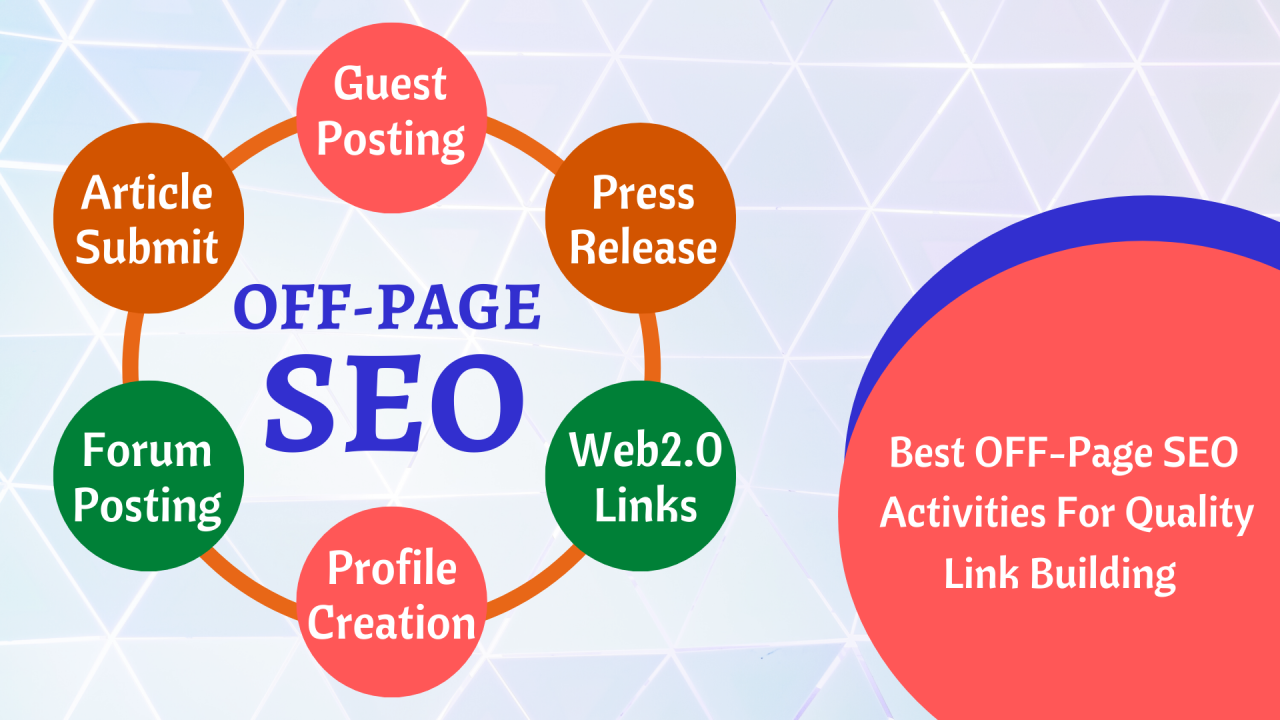What are best SEO Activities and write their basic 5 rules?
SEO Activities: SEO (Search Engine Optimization) is the practice of optimizing a website or web page to improve its visibility in search engine results pages (SERPs), aiming to attract more organic (non-paid) traffic and brand awareness also.
Search Engine Optimization (SEO) refers to the practice of improving a website’s visibility in search engine results pages (SERPs) to drive organic (non-paid) traffic. SEO activities are strategies and techniques applied to both the content and the technical setup of a website to help it rank higher on search engines like Google, Bing, and Yahoo. These activities can be grouped into three main categories: on-page SEO, off-page SEO, and technical SEO. Each category serves a specific purpose and follows a set of basic rules to ensure effectiveness.
✅ Basic Rules of SEO Activities
Here are the core principles and best practices:
1. On-Page SEO Activities
On-page SEO focuses on optimizing individual web pages to improve their content and HTML source code. This includes:
- Keyword Research: Identifying the right keywords or phrases that users are searching for.
- Content Optimization: Creating high-quality, original, and valuable content that incorporates target keywords naturally.
- Meta Tags Optimization: Writing clear and keyword-rich title tags and meta descriptions to improve click-through rates.
- Header Tags (H1, H2, etc.): Using headers to structure content, making it easier for users and search engines to understand.
- Image Optimization: Compressing images for fast loading and using alt tags with relevant keywords.
- Internal Linking: Linking to other pages within your website to enhance navigation and user experience.
Read Also: What is HTML and Its benefits?
Basic Rules for On-Page SEO:
- Use keywords naturally; avoid stuffing.
- Ensure each page has a unique title and meta description.
- Optimize content for both users and search engines.
- Keep URLs short and keyword-friendly.
- Make content easily readable and scannable.
2. Off-Page SEO Activities

Off-page SEO refers to actions taken outside your own website to impact your rankings within SERPs. The main focus here is building backlinks from other reputable websites.
- Link Building: Acquiring backlinks through guest posts, partnerships, or directory listings.
- Social Media Sharing: Promoting content on social platforms to increase visibility and engagement.
- Influencer Outreach: Connecting with influencers or bloggers to share or link to your content.
- Brand Mentions: Getting your brand mentioned on other websites, even without direct links.
Basic Rules for Off-Page SEO:
- Aim for high-quality, relevant backlinks rather than quantity.
- Avoid black-hat techniques like buying links.
- Focus on building relationships with credible websites.
- Diversify backlink sources to build a natural link profile.
3. Technical SEO Activities

Technical SEO ensures that a website meets the technical requirements of search engines for crawling and indexing. It focuses on the website’s backend structure and performance.
- Site Speed Optimization: Improving page load times.
- Mobile-Friendliness: Ensuring the website works well on all devices.
- Secure Sockets Layer (SSL): Using HTTPS for secure browsing.
- XML Sitemaps: Creating sitemaps to help search engines navigate your site.
- Robots.txt File: Guiding search engine bots on which pages to crawl or avoid.
- Fixing Crawl Errors: Monitoring and correcting issues via tools like Google Search Console.
Basic Rules for Technical SEO:
- Use responsive design for mobile users.
- Regularly check and fix broken links or errors.
- Optimize for fast loading times.
- Maintain a clean, crawlable site structure.
- Keep the website secure with HTTPS.
In summary, SEO activities involve optimizing your website’s content, building external credibility, and ensuring technical excellence. By following these foundational rules and maintaining consistency, a site can improve its search engine rankings and attract more organic traffic over time.
1. Keyword Research
- Identify relevant keywords your target audience is searching for.
- Use tools like Google Keyword Planner, Ubersuggest, or Ahrefs.
2. On-Page Optimization
- Title Tag: Include primary keywords; keep it under 60 characters.
- Meta Description: Summarize the page; aim for 150–160 characters.
- Headings (H1, H2, etc.): Use properly to structure content.
- URL Structure: Keep URLs clean, short, and keyword-rich.
- Image Optimization: Use alt text and compress images for fast loading.
- Internal Linking: Link to relevant pages within your website.
3. High-Quality Content
- Original, valuable, and well-written content.
- Solve user problems or answer questions.
- Regularly update content to stay relevant.
4. Technical SEO
- Ensure mobile-friendliness (responsive design).
- Improve page speed (fast loading times).
- Use HTTPS for secure browsing.
- Fix broken links and ensure proper indexing.
5. Off-Page SEO
- Build high-quality backlinks from reputable websites.
- Use social media to share and promote content.
- Guest blogging and influencer outreach.
6. User Experience (UX)
- Easy navigation and clean design.
- Clear calls-to-action (CTAs).
- Reduce bounce rate by engaging visitors.
7. Analytics and Monitoring
- Use tools like Google Analytics and Google Search Console.
- Track traffic, user behavior, and keyword rankings.
- Adjust strategy based on performance data.
1. What is SEO and why is it important?
Answer: SEO (Search Engine Optimization) is the process of improving a website’s visibility on search engines like Google. It helps attract organic traffic, builds credibility, and improves user experience, which can lead to more conversions and business growth.
2. What are the main types of SEO?
Answer: The three main types are:
- On-Page SEO (content and HTML optimization)
- Off-Page SEO (backlink building and external signals)
- Technical SEO (site speed, mobile-friendliness, and crawlability)
3. What is keyword research in SEO?
Answer: Keyword research is the process of finding and analyzing search terms that people enter into search engines. It helps identify topics your audience is interested in, guiding content creation.
4. How long does it take to see results from SEO?
Answer: SEO is a long-term strategy. You may begin to see results within 3 to 6 months, but more competitive keywords and industries may take longer.
5. What is a backlink and why is it important?
Answer: A backlink is a link from another website to your site. High-quality backlinks signal trust and authority to search engines, which can improve your rankings.
6. What are meta tags in SEO?
Answer: Meta tags are snippets of text in the website’s code that describe the page content, such as the title tag and meta description. They help search engines and users understand the page.
7. How does mobile-friendliness affect SEO?
Answer: Google uses mobile-first indexing, meaning it prioritizes the mobile version of your site for ranking. A mobile-friendly site provides a better user experience and can positively affect SEO.
8. What is the difference between white-hat and black-hat SEO?
Answer:
- White-hat SEO follows search engine guidelines and focuses on quality content and user experience.
- Black-hat SEO uses unethical tactics like keyword stuffing or buying links, which can lead to penalties.
9. Do social media signals affect SEO rankings?
Answer: While social media signals are not direct ranking factors, they can indirectly impact SEO by increasing content visibility, generating traffic, and potentially earning backlinks.
10. What tools are commonly used for SEO?
Answer: Popular SEO tools include:
- Google Search Console (monitoring performance and issues)
- Google Analytics (traffic analysis)
- SEMrush, Ahrefs, Moz (keyword research, site audits, backlink analysis)
- Yoast SEO (WordPress plugin for on-page SEO)













Post Comment